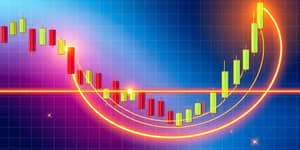
In a world where economies shift in the blink of an eye, the ability to anticipate changes is crucial. By harnessing data as a compass, market participants can navigate uncertainty and seize emerging opportunities.
Economic indicators are statistical metrics that describe the current state of the economy and offer forecasts for its future. They fall into three broad categories: leading, coincident, and lagging. While coincident measures capture the present and lagging indicators reflect the past, it is the leading indicators that hold the power to predict future economic activity with precision.
Leading indicators include the Conference Board Leading Economic Index® (LEI), Consumer Confidence Index (CCI), initial jobless claims, durable goods orders, and building permits. Each component provides a piece of the puzzle, revealing shifts in consumer sentiment, production trends, and investment plans before they fully materialize in GDP or unemployment statistics.
The Conference Board LEI, a composite of ten components, is often considered the gold standard for forecasting. In May 2025, the LEI fell by 0.1% to 99.0 (2016=100), driven by weakened consumer expectations, reduced building permits, and shorter manufacturing hours. Despite these declines, it has not yet signaled an official recession, highlighting broader economic resilience.
Other key indicators include:
Collectively, these measures offer a holistic, multi-indicator assessment is essential for anticipating turning points in the business cycle.
By mid-2025, the US economy exhibited mixed signals. After growing 2.8% in 2024, GDP contracted by 0.2%–0.3% annualized in Q1 2025, primarily due to a 4.9% plunge in net exports caused by pre-tariff import surges. Meanwhile, consumer spending slowed to 0.8% growth—the weakest pace in two years—yet real personal consumption expenditures still rose 1.8%, underscoring resilient household demand.
The labor market remains a bright spot: unemployment stabilized between 4.0% and 4.2%, and weekly jobless claims have not spiked. Inflation has moderated toward the Federal Reserve’s target, with headline CPI at 2.4% year-over-year in May 2025 and core inflation at 2.8%.
Still, significant headwinds loom: rising tariffs in Q3 2025, geopolitical tensions affecting oil prices, and the specter of stagflation—slower growth paired with persistent inflation.
Effective forecasting relies on recognizing consistent signals across multiple indicators. When the LEI, CCI, building permits, and durable goods orders all trend downward over several months, history shows it often precedes an economic slowdown.
However, unexpected shocks can rapidly alter forecasts. Global crises—pandemics, geopolitical conflicts, or abrupt policy shifts—can upend even the strongest predictive patterns.
Market participants use leading indicators to adapt strategies and allocate resources more effectively. Investors might rebalance portfolios toward defensive sectors when leading indicators weaken, while policymakers could adjust interest rates or fiscal support in anticipation of slowing growth.
By translating raw data into actionable insights, organizations can data-driven strategies drive smarter decisions and build resilience.
Even the most comprehensive set of leading indicators cannot predict every twist. The risk of stagflation remains real: a combination of slower growth, persistent inflation, and potential unemployment increases. Tariff escalations scheduled for Q3 2025 could further dent growth forecasts.
To navigate these uncertainties, adopt a holistic perspective that blends quantitative data with qualitative assessments:
In an era of rapid change, market leading indicators offer a powerful lens through which to foresee economic trends. While no tool is infallible, the disciplined use of multiple data points, combined with qualitative insights, equips investors, businesses, and policymakers to adapt proactively.
By continuously monitoring shifts in consumer confidence, production orders, labor market signals, and composite indexes, you can leading indicators reveal hidden economic shifts and navigating uncertainty through informed analysis. Embrace these tools as your guide to a more resilient, forward-looking strategy in the ever-evolving global economy.
References













